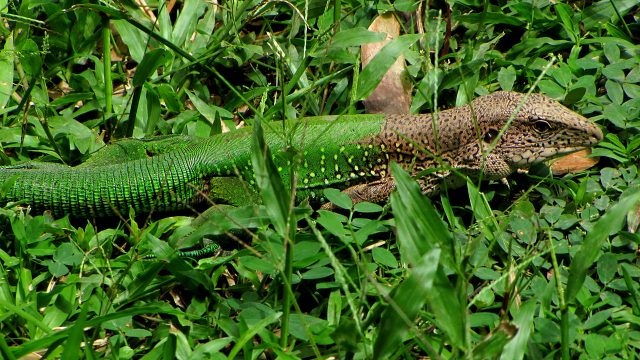Type the name of the breed you're looking for below
[wpdreams_ajaxsearchlite] Don't see the breed your're looking for? Click here and let us know!
Giant Ameiva
| Place of Origin and Range | It is widespread in Central America and South America, including: Panama, Brazil, Colombia, Surinam, French Guiana, Guyana, Venezuela, Bolivia, Ecuador, Peru, Argentina, and Paraguay. It is also found on the Caribbean islands of Trinidad and Tobago, Grenada, the Grenadines, Margarita, Swan Island, and Isla de la Providencia. |
| Description | Giant Ameiva have a streamlined body, pointed head, slightly forked tongue, and muscular hind legs. Both sexes have random black spots and mottling along the sides. Females usually have much less green than males and a more dusty of a green colour. Males have vibrant green colouration and more bold mottling. Males also have more expanded jaws. Green Ameivas are popular as a pet because of the male's striking green colouration. |
| Morph Patterns Available | Yes |
| Adult Size | Can grow up to 18 in (45 cm) |
| Accommodation | They are very active and predatory lizards, requiring a large amount of space to run. They prefer high temperatures, up to 105–110 °F (41–43 °C) at their basking spot and 80 °F (27 °C) elsewhere in their habitat during the day. This lizard enjoys burrowing in the sand. |
| Lifespan | Can live 2- 6 years |
| Feeding / Diet | Some of these lizards eat small amounts of fruits or vegetables, but most are entirely insectivorous. Like many reptiles, in captivity they must be provided a diet supplemented with extra calcium and a light source with a UVB radiation to reduce the risk of bone disorders. Can eat canned cat food and/or an occasional pinky mouse. |



